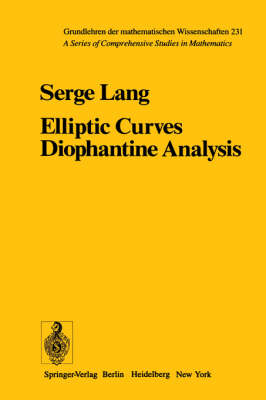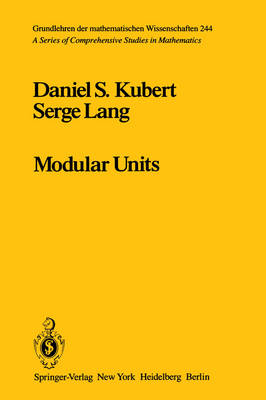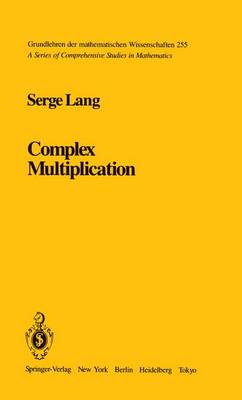Grundlehren der mathematischen Wissenschaften
3 primary works
Book 231
It is possible to write endlessly on elliptic curves. (This is not a threat.) We deal here with diophantine problems, and we lay the foundations, especially for the theory of integral points. We review briefly the analytic theory of the Weierstrass function, and then deal with the arithmetic aspects of the addition formula, over complete fields and over number fields, giving rise to the theory of the height and its quadraticity. We apply this to integral points, covering the inequalities of diophantine approximation both on the multiplicative group and on the elliptic curve directly. Thus the book splits naturally in two parts. The first part deals with the ordinary arithmetic of the elliptic curve: The transcendental parametrization, the p-adic parametrization, points of finite order and the group of rational points, and the reduction of certain diophantine problems by the theory of heights to diophantine inequalities involving logarithms. The second part deals with the proofs of selected inequalities, at least strong enough to obtain the finiteness of integral points.
Book 244
In the present book, we have put together the basic theory of the units and cuspidal divisor class group in the modular function fields, developed over the past few years. Let i) be the upper half plane, and N a positive integer. Let r(N) be the subgroup of SL (Z) consisting of those matrices == 1 mod N. Then r(N)\i) 2 is complex analytic isomorphic to an affine curve YeN), whose compactifi cation is called the modular curve X(N). The affine ring of regular functions on yeN) over C is the integral closure of C[j] in the function field of X(N) over C. Here j is the classical modular function. However, for arithmetic applications, one considers the curve as defined over the cyclotomic field Q(JlN) of N-th roots of unity, and one takes the integral closure either of Q[j] or Z[j], depending on how much arithmetic one wants to throw in. The units in these rings consist of those modular functions which have no zeros or poles in the upper half plane. The points of X(N) which lie at infinity, that is which do not correspond to points on the above affine set, are called the cusps, because of the way they look in a fundamental domain in the upper half plane. They generate a subgroup of the divisor class group, which turns out to be finite, and is called the cuspidal divisor class group.
Book 255
The small book by Shimura-Taniyama on the subject of complex multi is a classic. It gives the results obtained by them (and some by Weil) plication in the higher dimensional case, generalizing in a non-trivial way the method of Deuring for elliptic curves, by reduction mod p. Partly through the work of Shimura himself (cf. [Sh 1] [Sh 2], and [Sh 5]), and some others (Serre, Tate, Kubota, Ribet, Deligne etc.) it is possible today to make a more snappy and extensive presentation of the fundamental results than was possible in 1961. Several persons have found my lecture notes on this subject useful to them, and so I have decided to publish this short book to make them more widely available. Readers acquainted with the standard theory of abelian varieties, and who wish to get rapidly an idea of the fundamental facts of complex multi plication, are advised to look first at the two main theorems, Chapter 3, 6 and Chapter 4, 1, as well as the rest of Chapter 4. The applications of Chapter 6 could also be profitably read early. I am much indebted to N. Schappacher for a careful reading of the manu script resulting in a number of useful suggestions. S. LANG Contents CHAPTER 1 Analytic Complex Multiplication 4 I. Positive Definite Involutions . . . 6 2. CM Types and Subfields. . . . . 8 3. Application to Abelian Manifolds. 4. Construction of Abelian Manifolds with CM 14 21 5. Reflex of a CM Type . . . . .


